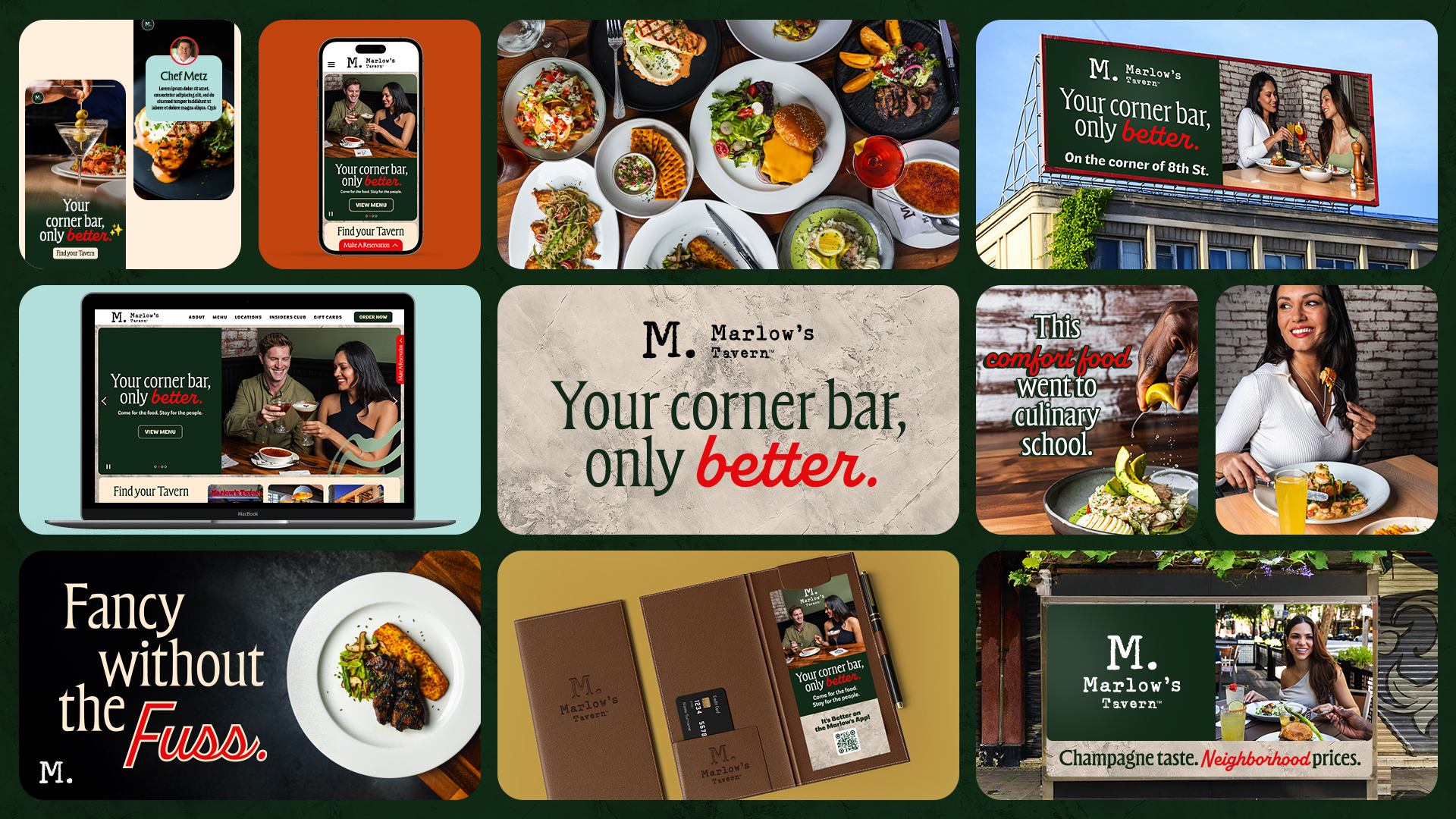The hospitality world doesn’t run on good vibes and craveable food pics alone. Behind every packed restaurant is a marketing system doing a good amount of the heavy lifting, nudging, converting, and reminding guests to take action.
The brands doing it best aren’t chasing clicks. They’re building experiences designed to perform.
This month, we’re zeroing in on two essentials that separate passive presence from active growth: websites built to convert and media buys that move beyond the vanity metrics trap.
If your marketing looks great but feels stuck, you might be focusing on the wrong wins.
Built to Convert: How Smart Website Design Drives Guest Action
There’s a fine line between a pretty website and a profitable one.
A visually stunning homepage is great, but if your visitors don’t know how to easily place an online order, make a reservation, or inquire about catering within the first few seconds, they’re likely bouncing and heading to a competitor with better UX.
The best hospitality websites are designed with purpose: every click, scroll, and scroll-triggered animation serves the end goal of conversion.
What High-Performing Hospitality Websites Get Right:
- Clear, action-forward CTAs, like “Order Now,” instead of “Learn More”
- Strategic user flows that anticipate what the guest needs before they ask for it
- Mobile-first design, because the majority of searches for restaurants happen on smartphones
- Thoughtfully embedded keywords for local SEO because yes, people do Google “best rooftop brunch in [your city]” and expect results)
- Optimization for generative AI search ensuring your site’s content is structured and relevant so AI-powered tools can accurately pull and present your restaurant to potential guests
There’s also a deeper level of thinking here: aligning brand personality with functional UX. The tone, photography, and even button copy should reinforce your brand while moving guests closer to making reservations or ordering.
In other words, great restaurant website design isn’t just about looking good; it works as hard as your front-of-house team to create a seamless guest experience and drive revenue.
Beyond Impressions: How Data-Driven Media Buying Drives Real Restaurant Conversions
Let’s talk paid media, specifically, what makes it worth the spend.
It’s one thing to rack up likes, impressions, and even clicks, but none of that matters if it’s not turning into actual guests walking through your doors.
The best media buying strategies are built around hospitality-specific KPIs and backed by constant data interpretation.
This isn’t about performance for performance’s sake. It’s about aligning paid media with the real goals of your business: reservations, order volume, and lifetime value.
Here’s What Smart Media Buying Looks Like in Hospitality:
- KPIs are tracked across the entire journey, not just click-throughs
- Budget is reallocated in real time based on data, not assumptions
- Campaigns are aligned with the customer’s decision window (when they’re hungry, planning a weekend out, or reserving a private event)
The difference between a campaign that “got some good engagement” and one that gets butts in seats lies in the intention behind the data.
In the most successful campaigns, strategy and creativity are in constant conversation, with creative designed to stop the scroll, targeting that reaches the right person, and optimization that ensures interest becomes action.
Creative Corner
Each month, we like to spotlight a few projects pushing the boundaries of restaurant marketing and hospitality branding. Not to show off (okay, maybe a little bit to show off) but mostly to show what’s possible when great creative meets strategy that understands the industry.
In the Wild This Month:
Marlow’s Tavern
This summer, we highlighted Marlow’s across emails and paid media using fresh creative from our new campaign stylescape, including a real world billboard in Orlando.
Our strategy, informed by competitor analysis, guest surveys, and first-party data, aimed to strengthen Marlow’s identity and set them apart from local and national chains.
What This Means For You
Hospitality marketing moves fast, and the brands winning in today’s climate aren’t relying on guesswork. They’re crafting websites designed for conversion, running media campaigns that track what actually matters, and creating customer journeys that feel seamless, elevated, and intentional.
At Dreambox, our team lives on the cutting edge of hospitality marketing, combining deep tech know-how, sharp media strategy, and creative thinking to help brands stay ahead in a fast-changing world.
If you’re curious and want to chat with someone from our team or if you simply want to share your thoughts on the future of hospitality marketing, we’d love to hear from you.










